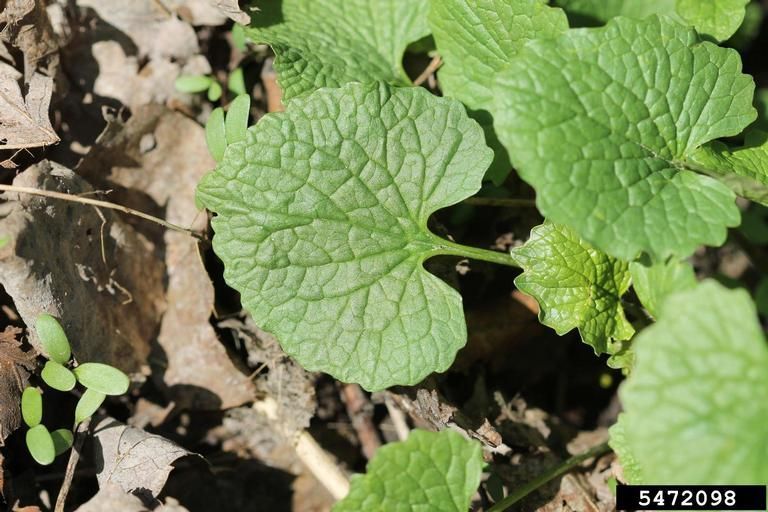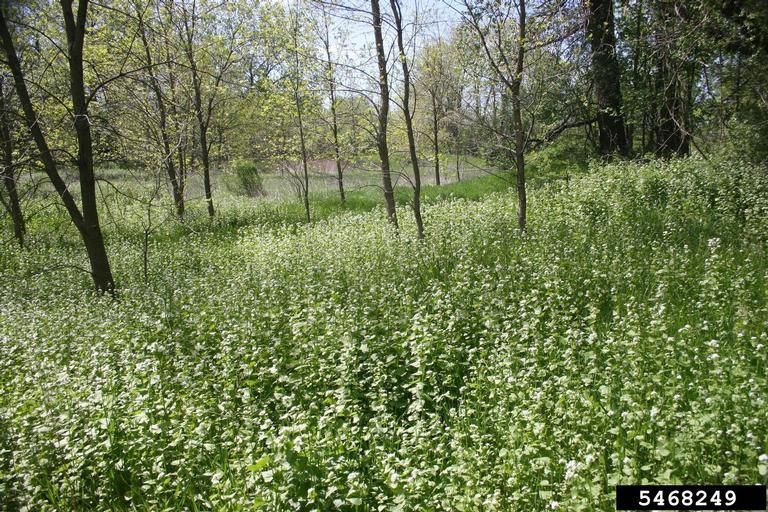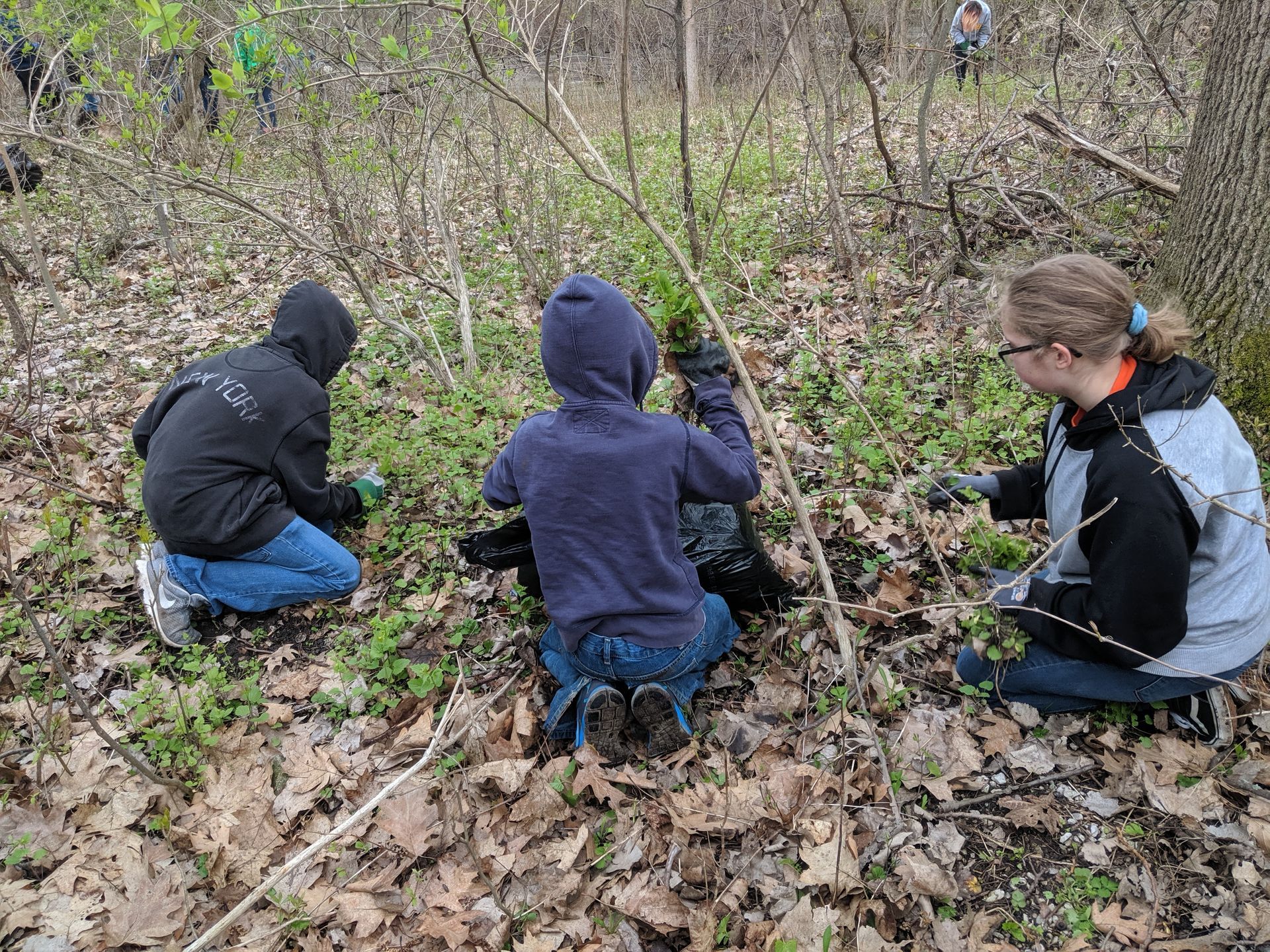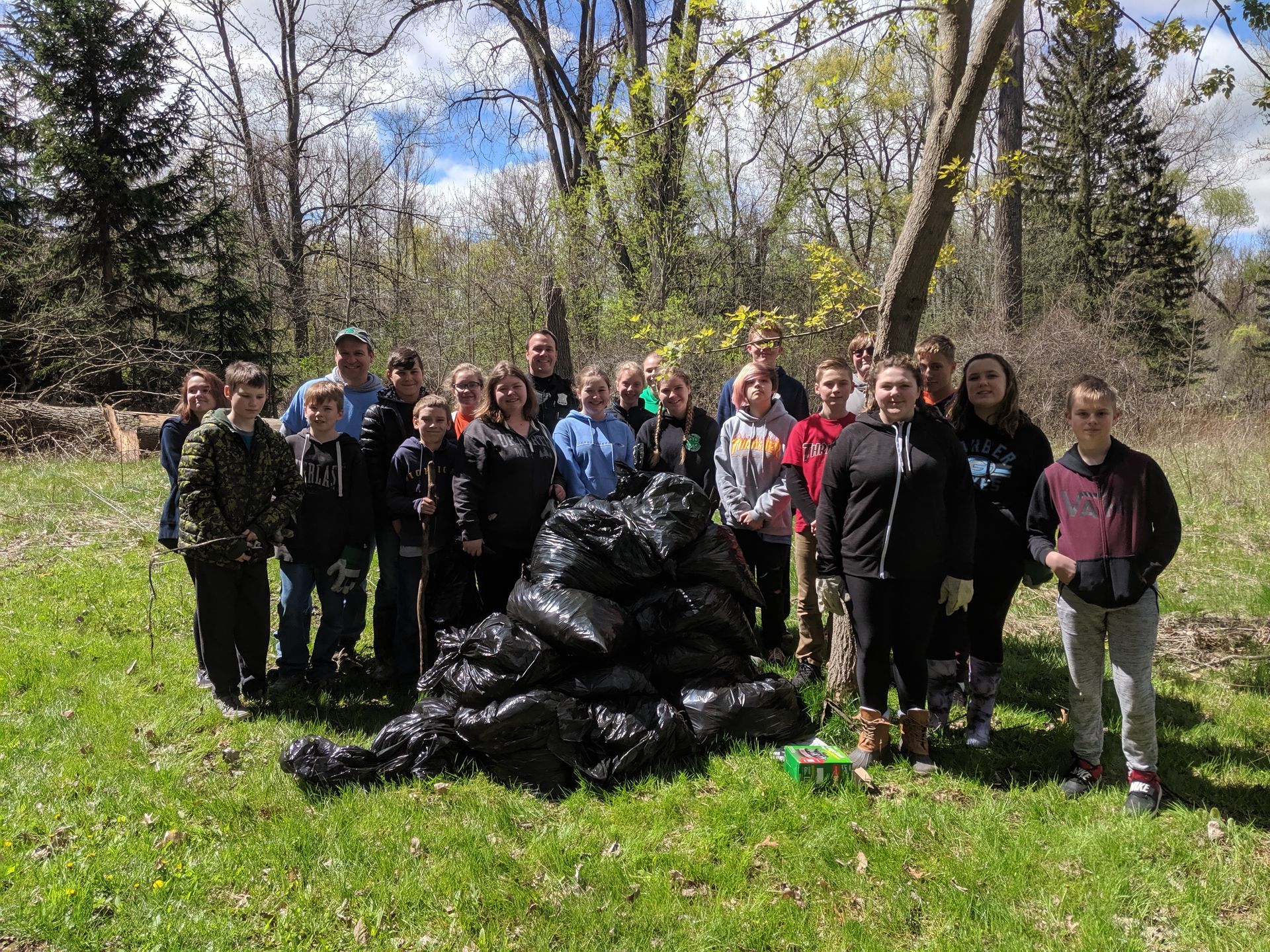Garlic Mustard: The Edible Invasive
Have you ever heard of an invasive species that you can eat? Now you have! Garlic mustard, also called poor man’s mustard, hedge garlic, and garlic root, is an invasive species of plant found across the northern United States. It hails from Europe and Asia and was introduced to the United States in the 1800s as a food source. This plant is also thought to have herbal and medicinal properties and was even used for erosion control. The name garlic mustard comes from the garlic smell that its leaves and stems give off when crushed. This plant is indeed edible and should be harvested young when it’s less bitter. Older plants need to be cooked thoroughly because they contain cyanide. Please be sure to consult foraging safety guidelines, including only eating wild plants that you have 100% identified correctly .
Identification
Garlic mustard can be identified by a few key factors. In its first year, the plant has heart-shaped rosette leaves that grow at ground level. By its second year, it develops stems that are 1-4 feet long with small white flowers. These flowers have 4 petals each and bloom from early April to June. Garlic mustard also has long green seed pods that turn brown in the fall, and one individual plant can produce thousands of seeds. The plant occupies wooded areas and can tolerate a wide range of conditions, but it thrives in moist and shaded areas. Although garlic mustard is tolerant of many environmental factors, it does not do well in highly acidic soils.

Impact
Why is garlic mustard considered an invasive species? According to The Nature Conservancy , an invasive species is any species that is non-native and causes harm to the environment. Garlic mustard spreads very quickly and grows in dense colonies, outcompeting native plants for resources like sunlight and moisture. It emerges earlier in the spring than many native plants, reducing their chance to grow. Garlic mustard also exhibits a behavior called allelopathy , which is where it releases chemical compounds into the soil that limit the growth of other surrounding plants. This plant may potentially have negative effects on the surrounding wildlife as well, decreasing habitat for salamanders, insects, and tree seedlings ( New York Invasive Species Information ).

Management and Prevention
Garlic mustard can be controlled with two different methods: mechanical control and chemical control. Mechanical control involves hand-pulling the plants early in the season before flowering starts or at least before the plants start to seed. The optimum time to do this is in the spring when the soil is moist. When hand-pulling, try to remove at least the upper half of the roots to prevent a new stalk from forming. Seeds can remain viable for at least 5 years so hand-pulling efforts should continue for this length of time. This method works best with small invasions or areas recently invaded.
Chemical control involves the application of an herbicide, which is a substance designed to kill plants. In dense stands where there are no other plants present, a glyphosate-based herbicide such as RoundUp can be effective. Application of herbicide for garlic mustard is most effective in March or April when garlic mustard is one of the few plants actively growing. Extra caution must be taken to ensure that the herbicide does not harm any native plants in the area. Please check your local regulations on chemical treatments of invasive plants. This method works best with large invasions that cannot be controlled by hand-pulling alone. For more information on control methods, click HERE.
In terms of prevention , the goal is to prevent garlic mustard from establishing a population. Any disturbances in the environment that could contribute to an infestation should be minimized. This includes physical disturbances like walking or animals grazing. Monitoring the environment and pulling any plants as soon as they are introduced will also help an invasion from becoming established.

On the Ground
Want to learn how to help combat this invader in Michigan? Here’s your chance! MUCC’s On the Ground program is hosting a garlic mustard pull event on April 20, 2024, in partnership with the Michigan Department of Natural Resources (MDNR) Parks and Recreation Division at Saugatuck Dunes State Park. This event will take place from 10 AM-1 PM. Volunteers will meet at the small parking area adjacent to the Felt Mansion. Gear, lunch, and a volunteer gift will be provided to all registered volunteers. Volunteers are also encouraged to bring a reusable water bottle, although water will be provided throughout the day. Registration will close on Friday, April 19, 2024 at 4 PM. For more information and to register, click HERE. For any additional questions, contact Sarah Scheitz at sscheitz@mucc.org. We hope to see you there!

The post Garlic Mustard: The Edible Invasive appeared first on Michigan United Conservation Clubs.



